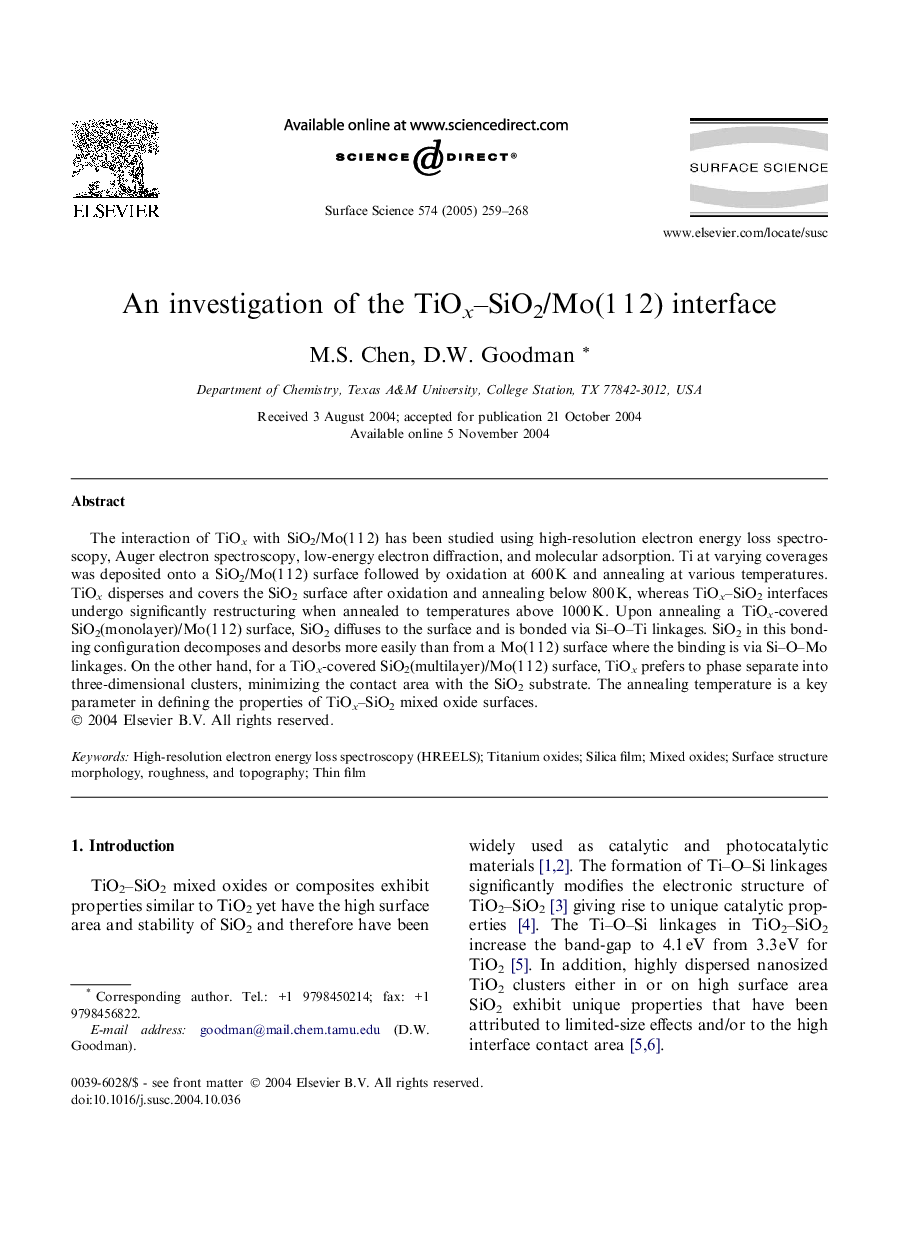| Article ID | Journal | Published Year | Pages | File Type |
|---|---|---|---|---|
| 9594707 | Surface Science | 2005 | 10 Pages |
Abstract
The interaction of TiOx with SiO2/Mo(1Â 1Â 2) has been studied using high-resolution electron energy loss spectroscopy, Auger electron spectroscopy, low-energy electron diffraction, and molecular adsorption. Ti at varying coverages was deposited onto a SiO2/Mo(1Â 1Â 2) surface followed by oxidation at 600Â K and annealing at various temperatures. TiOx disperses and covers the SiO2 surface after oxidation and annealing below 800Â K, whereas TiOx-SiO2 interfaces undergo significantly restructuring when annealed to temperatures above 1000Â K. Upon annealing a TiOx-covered SiO2(monolayer)/Mo(1Â 1Â 2) surface, SiO2 diffuses to the surface and is bonded via Si-O-Ti linkages. SiO2 in this bonding configuration decomposes and desorbs more easily than from a Mo(1Â 1Â 2) surface where the binding is via Si-O-Mo linkages. On the other hand, for a TiOx-covered SiO2(multilayer)/Mo(1Â 1Â 2) surface, TiOx prefers to phase separate into three-dimensional clusters, minimizing the contact area with the SiO2 substrate. The annealing temperature is a key parameter in defining the properties of TiOx-SiO2 mixed oxide surfaces.
Keywords
Related Topics
Physical Sciences and Engineering
Chemistry
Physical and Theoretical Chemistry
Authors
M.S. Chen, D.W. Goodman,
